
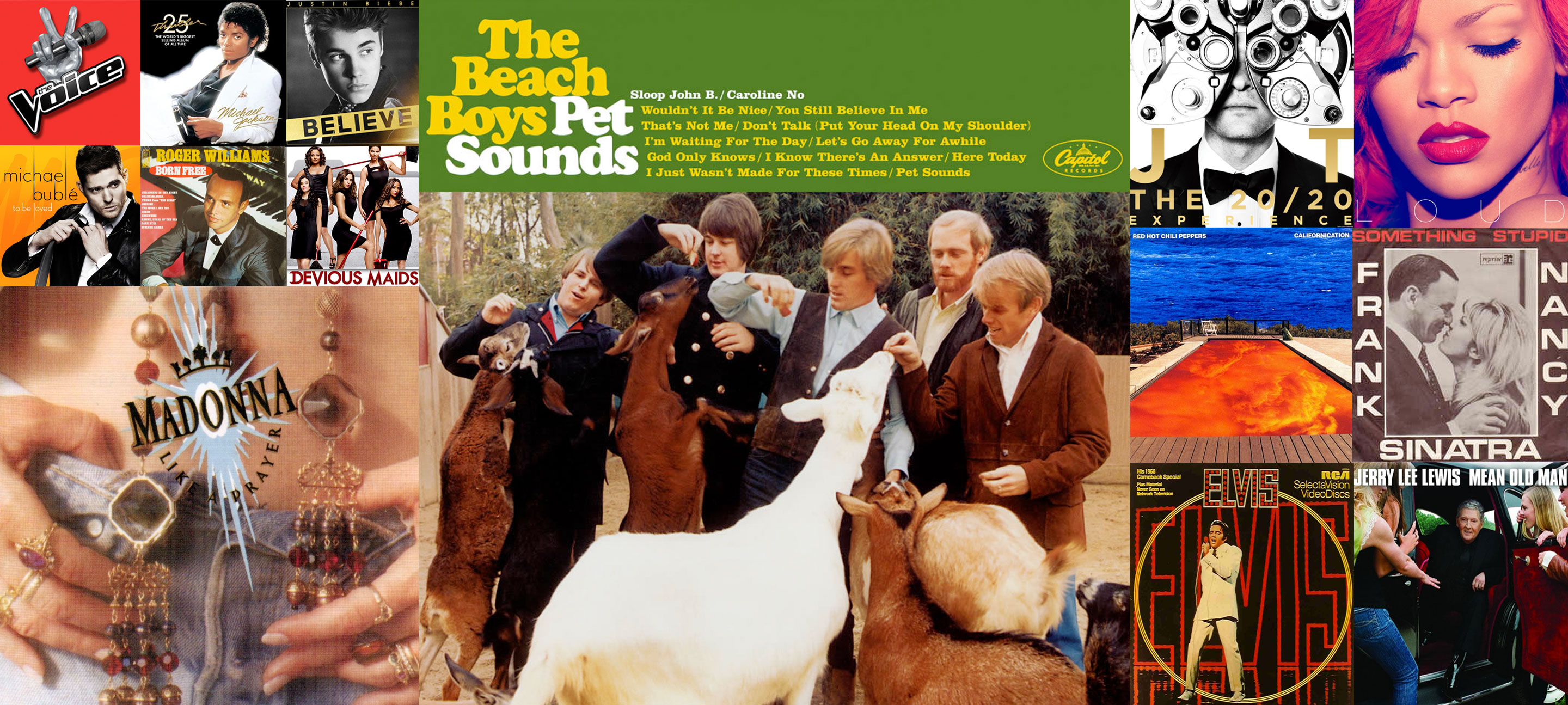
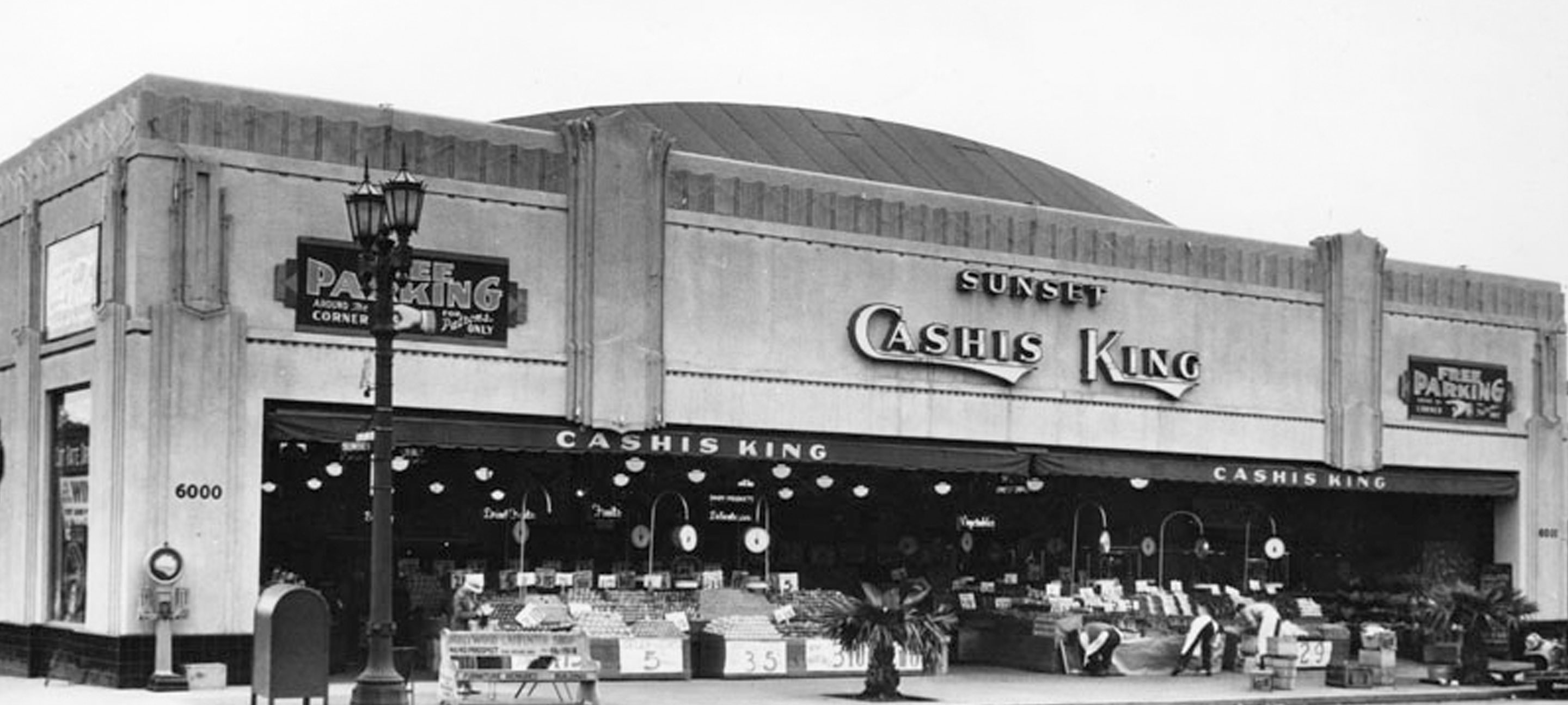
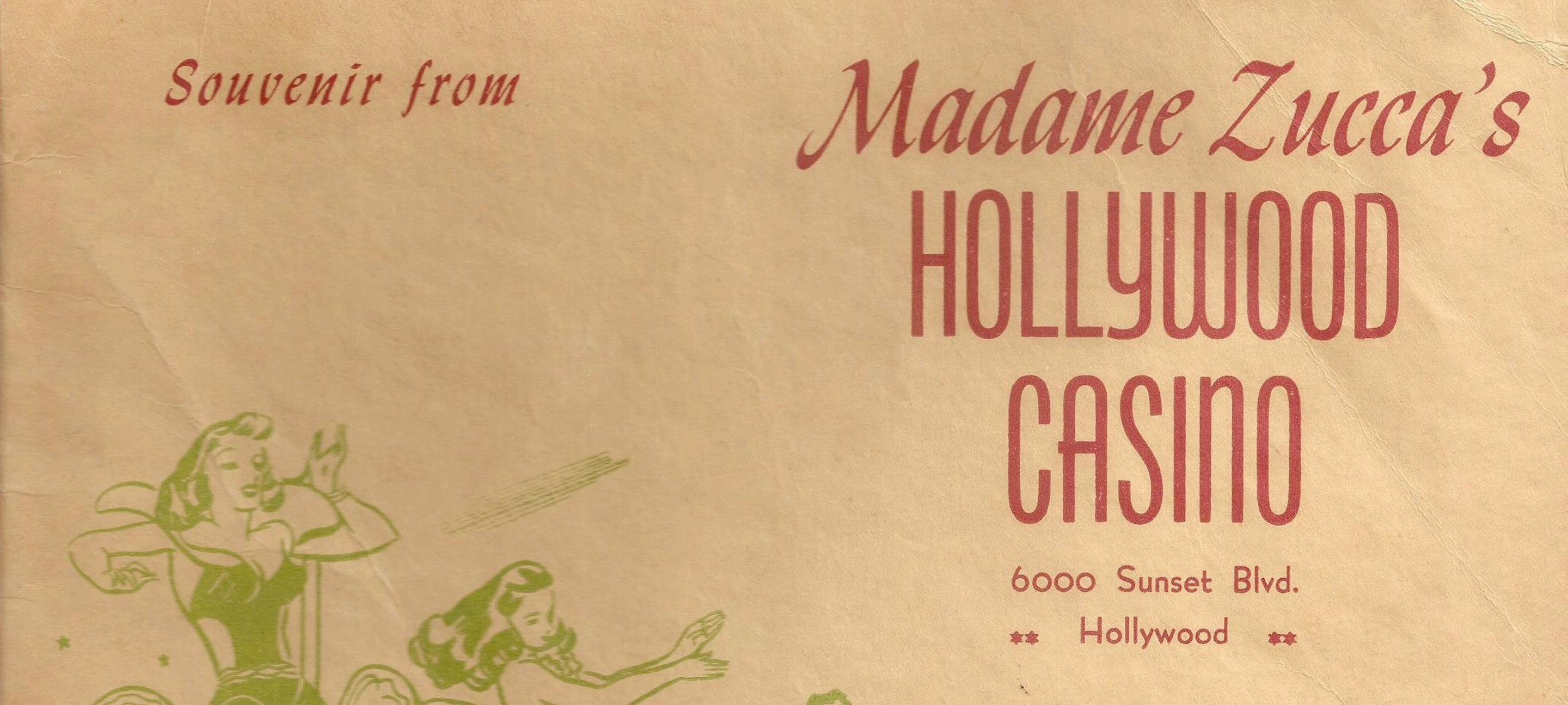
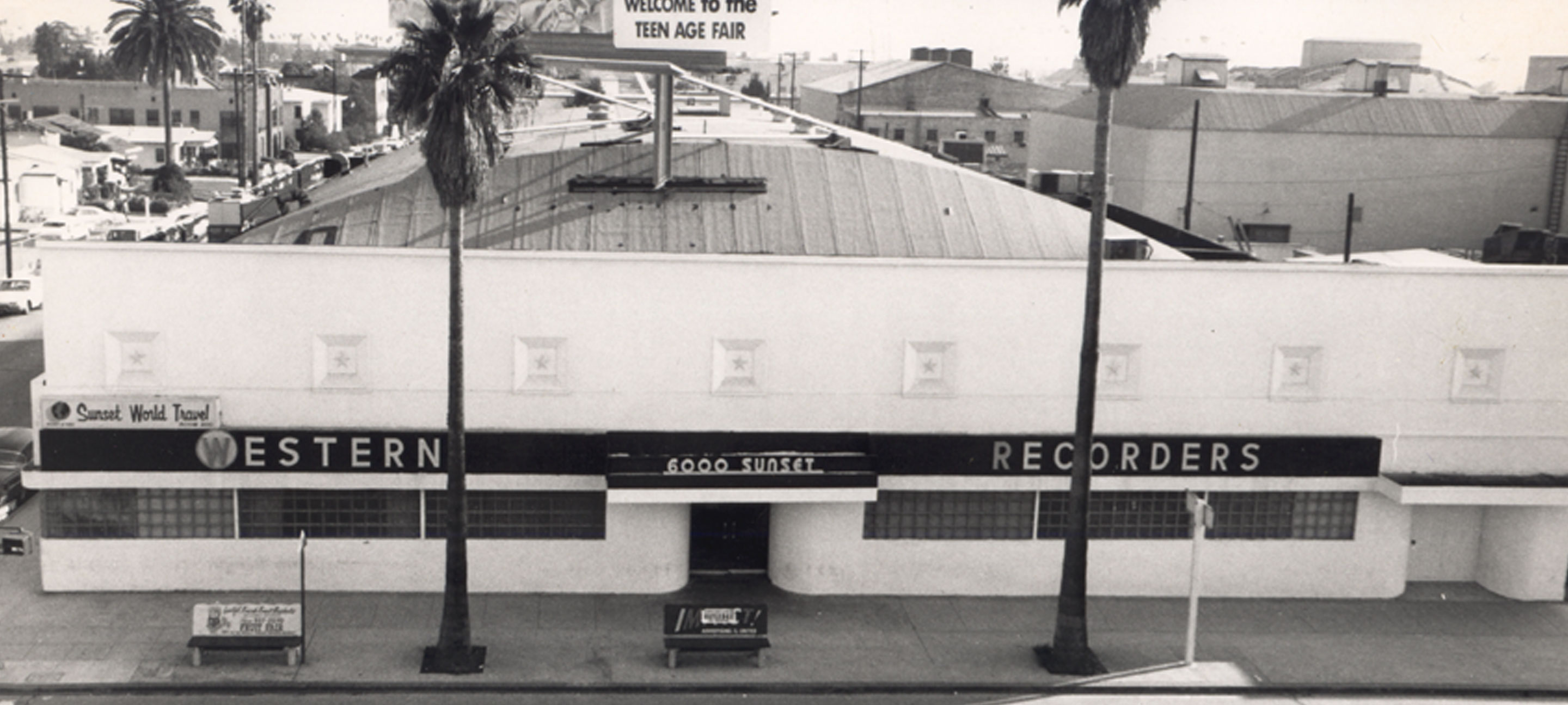
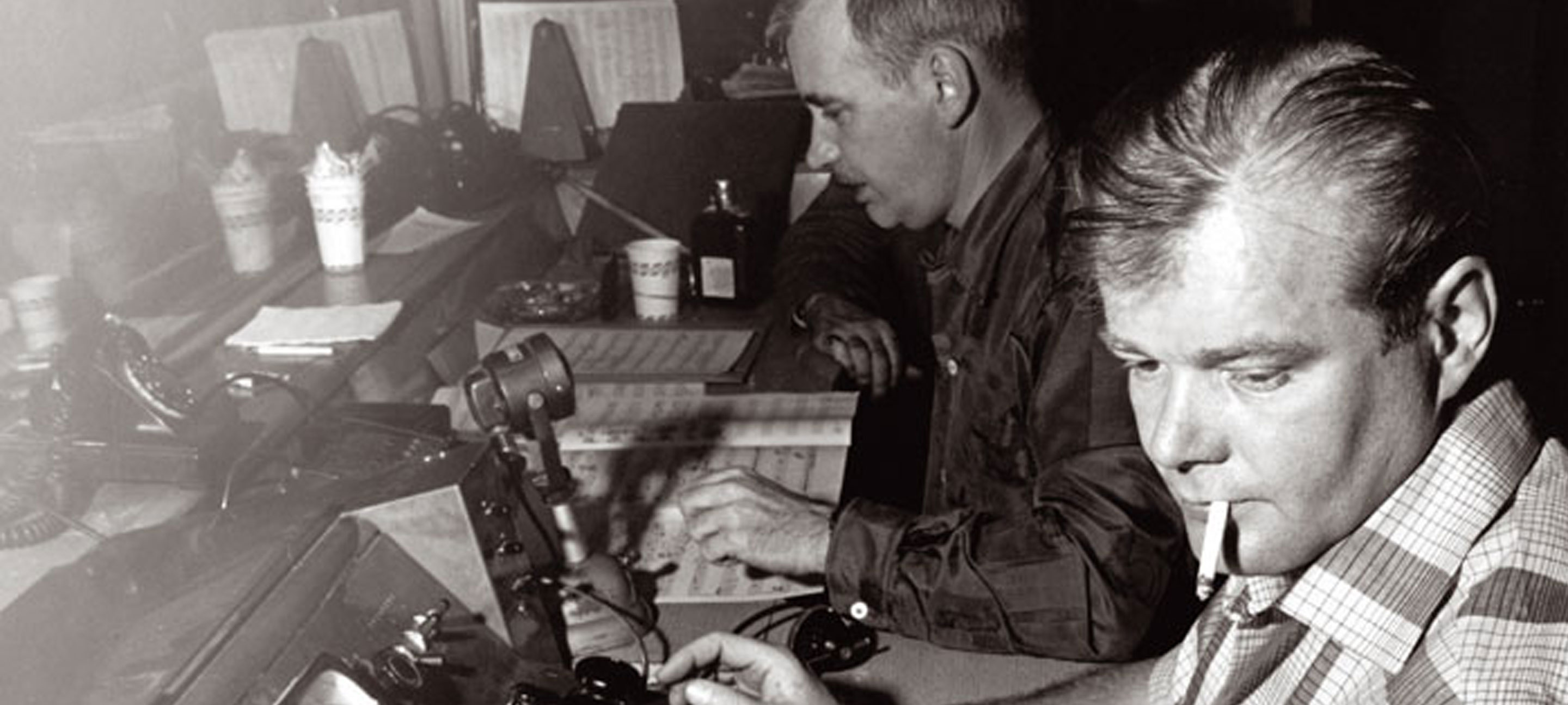
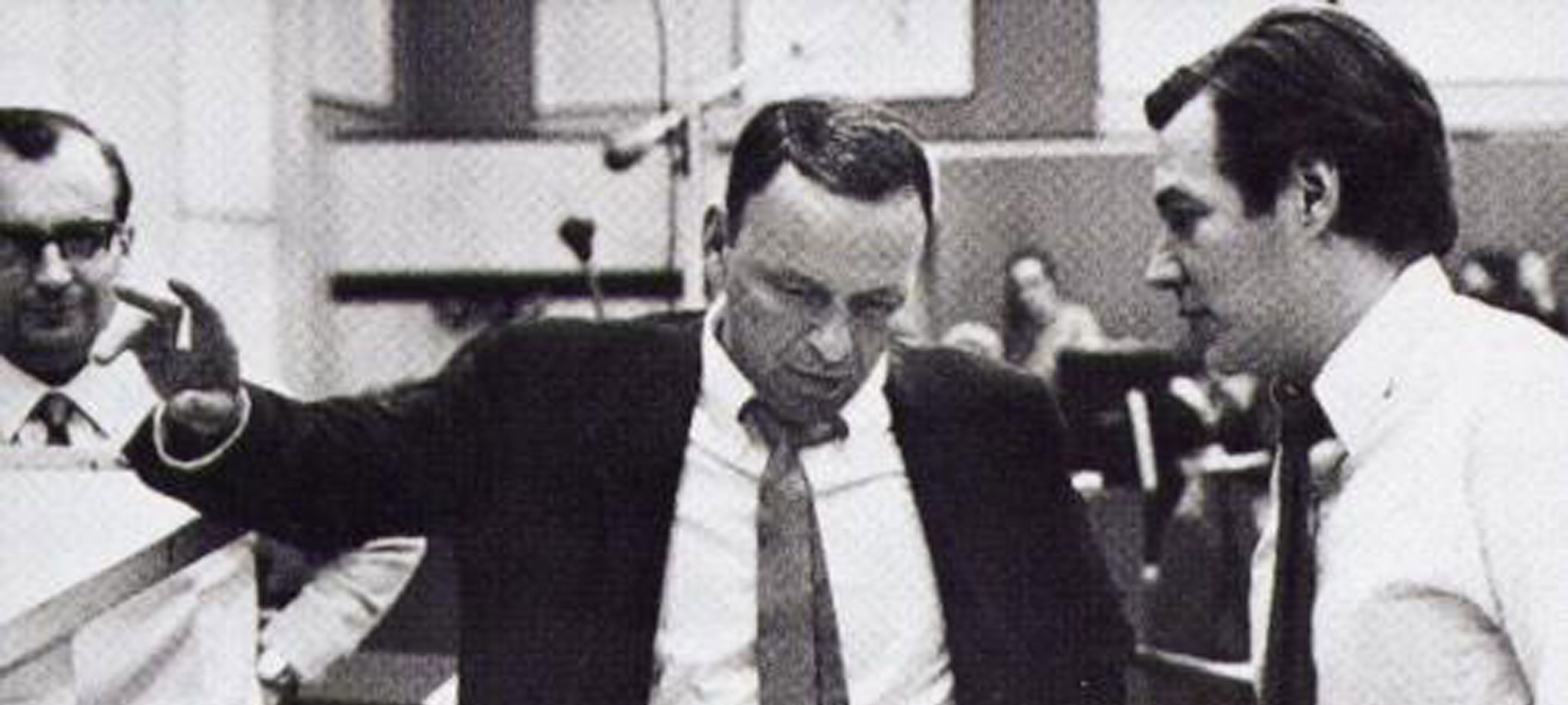
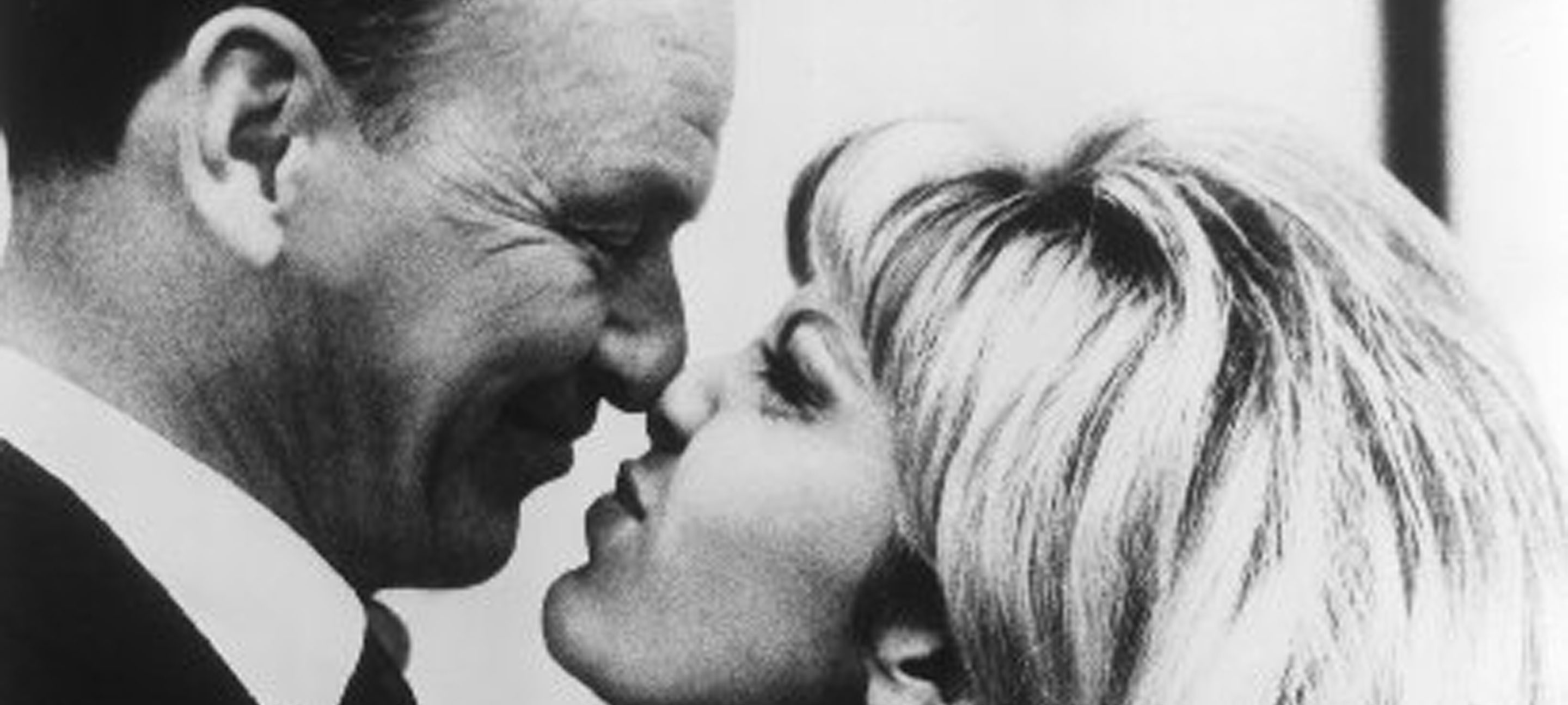
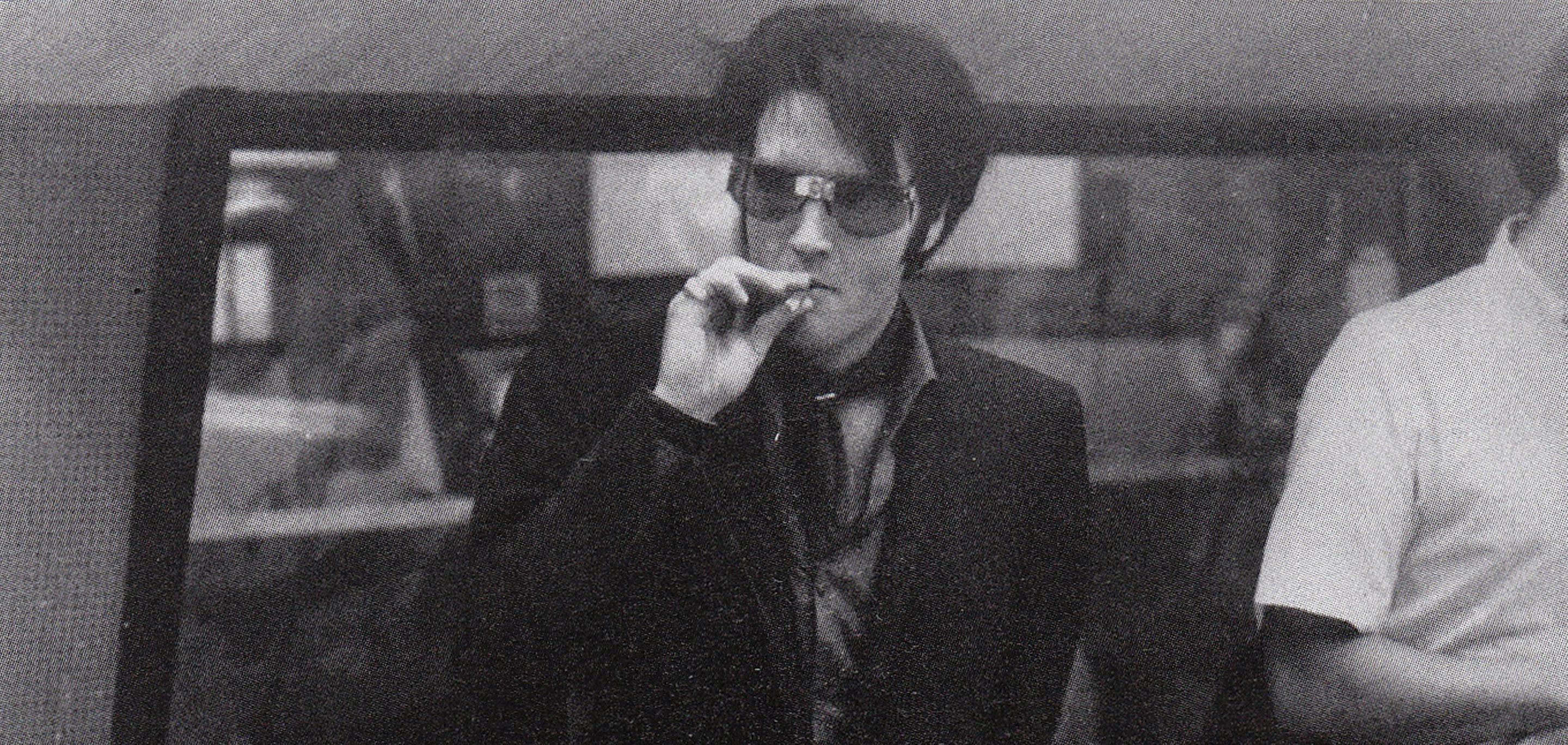
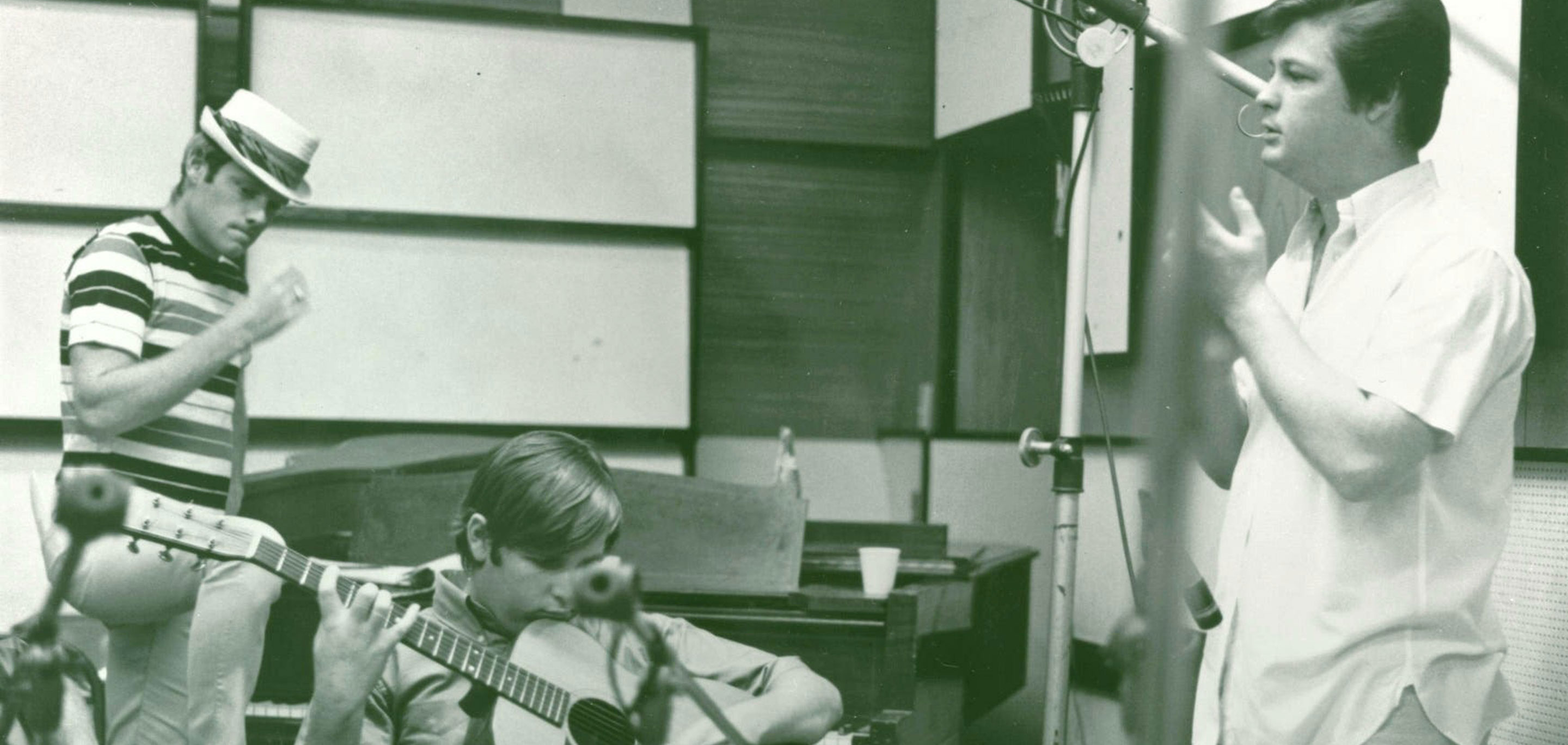
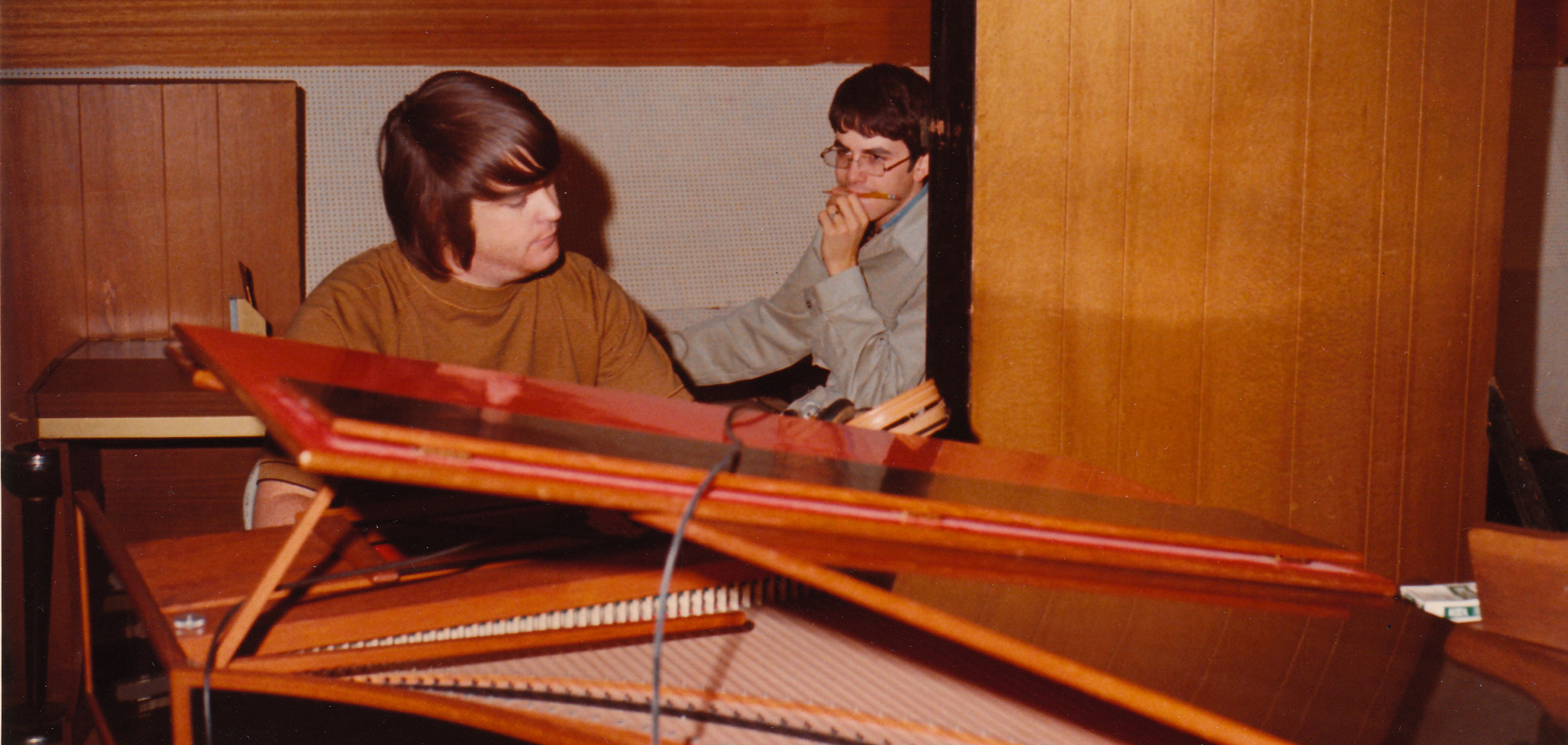
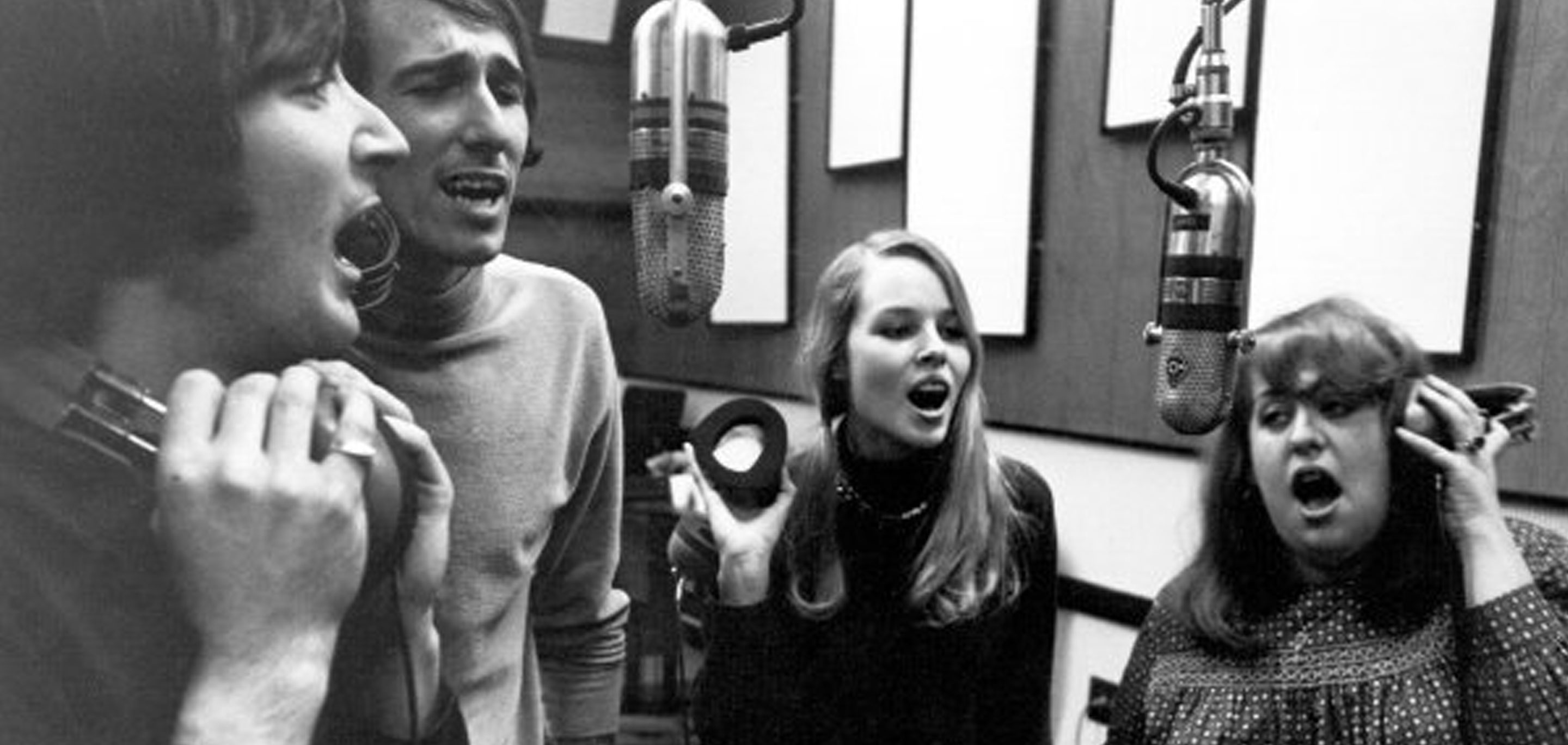
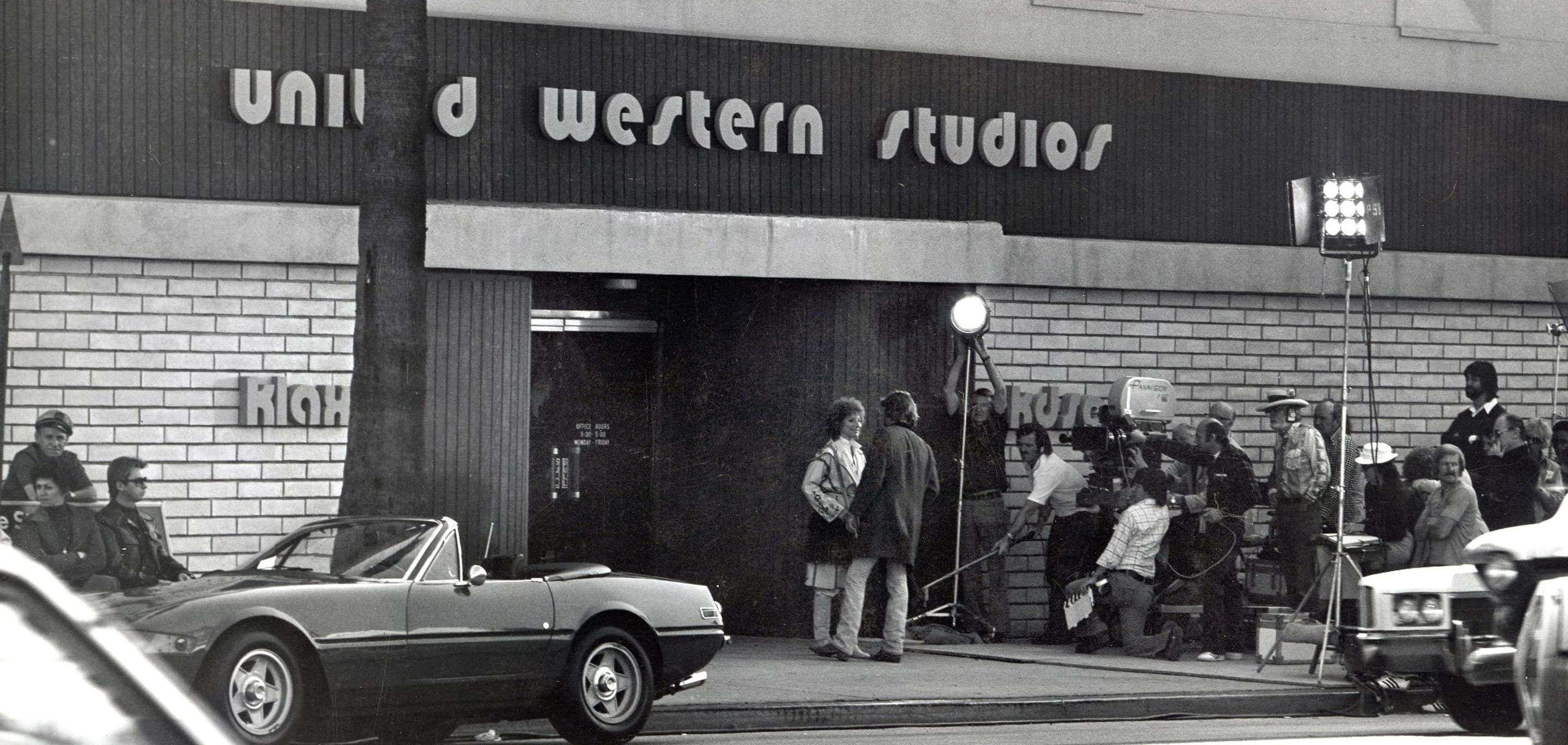
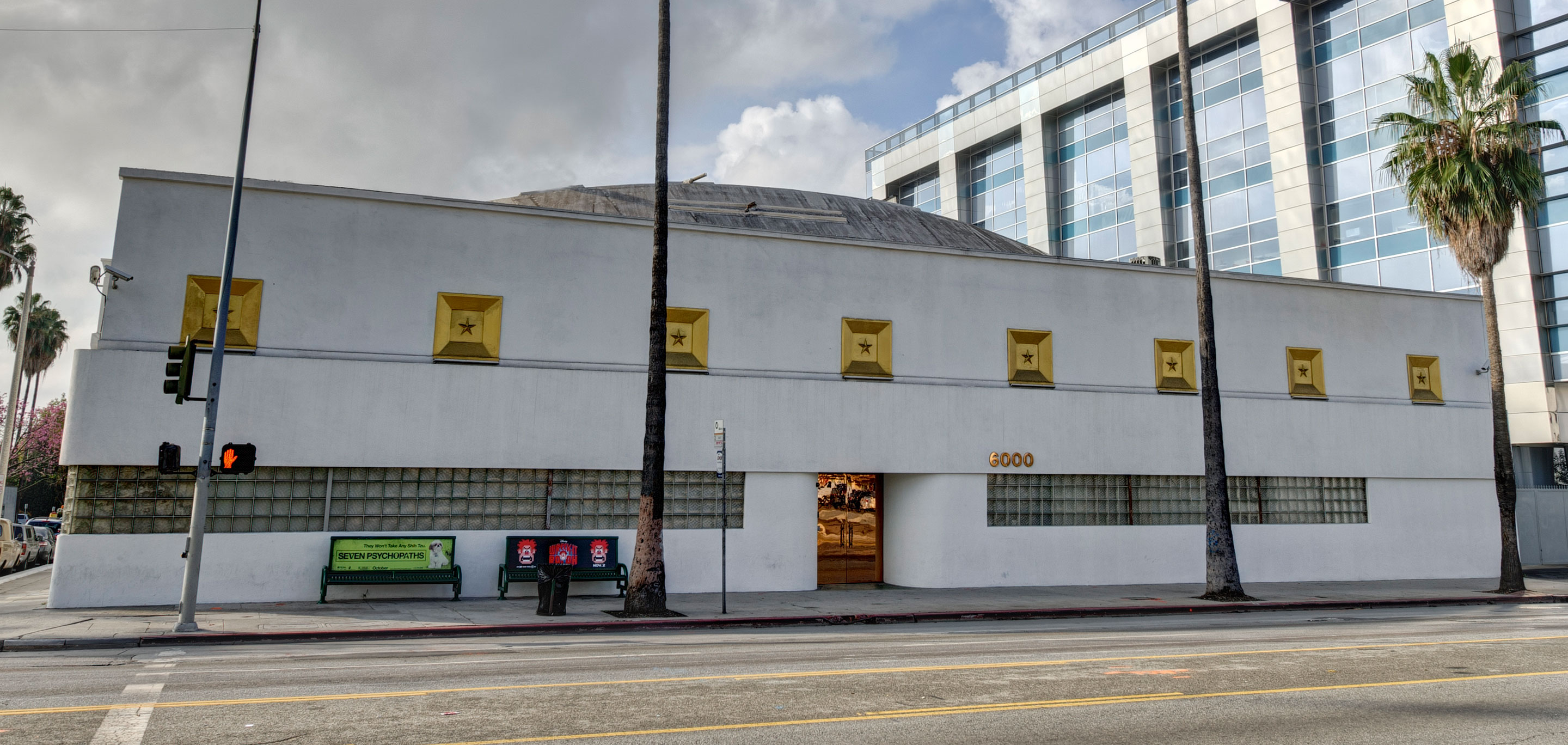

No other studio in the world has a story like ours...
Originally constructed as Cash Is King grocery market in 1933, the recording studios have a history that spans over 80 years.
Cash is King was at its time the largest market on the West Coast (you can still see some of the meat locker doors from this time). The market survived the Depression years until 1942 when it was converted into Madame Zucca’s Hollywood Casino. Madame Zucca’s entertained World War II soldiers with its wild burlesque shows and not-so-legal gambling. Over the next couple of years, the name was changed to the Cotton Club and then again to the French Casino in attempts to get around new liquor and gaming laws.
By 1950 the casino had closed and the building was converted into a radio broadcast center. First called West Coast Productions, the main stage was where Studio One stands today and produced hit radio shows like the Tennessee Ernie Ford Show. In 1954 the name was changed to Radio Center Theatre.
In 1957, Don Blake acquired the building and it was renamed Western Recorders. Soon, Blake would go on to sell Western Recorders to an engineer named Bill Putnam – Frank Sinatra’s personal engineer – who kept the name, but started the process of transforming the space into the recording studio we know today.
The studios first constructed as Cash Is King grocery market
Cash Is King closes, facility turned into Madame Zucca’s Hollywood Casino
Renamed the Cotton Club
Renamed as The French Casino
The casino closes, facility turned into West Coast Productions
Renamed Radio Center Theatre
Renamed Western Recorders
Ushering in a New Age in Media
By 1960, Bill Putnam was already known as one of the giants of the recording industry.
The inventor of the modern day recording console, he had already founded an incredibly successful recording studio in Chicago called Universal Recording. With the backing of his clients Frank Sinatra and Bing Crosby, Putnam moved to California to realize his dream of creating the largest recording studio complex on the West Coast. He first purchased United Studios at 6050 Sunset Boulevard, then purchased Western Recorders in 1961.
As soon as the doors opened, Western Recorders was producing some of the biggest hits of the pop music era. Frank Sinatra, whose new label Reprise was also housed in the building, recorded some of his greatest work in Studio One, including “My Way”, “The Summer Wind”, “That’s Life”, and his duet with his daughter Nancy Sinatra “Somethin’ Stupid”. Also in Studio One, the original Mission Impossible theme song was recorded, Elvis Presley revived his career with his 1968 Comeback Special, Roger Williams sang “Born Free”, and Peggy Lee recorded her hit “Is That All There Is?”.
The early years of Studio Two were dominated by some of the most memorable recordings of American television, including the themes from The Beverly Hillbillies, Green Acres, and Hawaii Five-O. Other hits from the time in Studio Two include Ricky Nelson’s “Fools Rush In”, Wayne Newton’s “Danke Schoen”, and the Righteous Brothers’ “Soul & Inspiration”.
It was in Studio Three, however, that sound of the 60s generation came into being. Here, The Beach Boys recorded their masterpiece album Pet Sounds and some of their greatest hits, including “California Girls”, “Good Vibrations”, and “God Only Knows”. It was also here that The Mamas & The Papas recorded their smashes “California Dreaming”, “Monday, Monday” and “Dancing in the Street”. Other notable recordings from this period include Scott McKenzie’s “San Francisco”, “Make Your Own Kind of Music” by Mama Cass, Barry McGuire’s anti-war anthem “Eve of Destruction” and The Cowsills’ hit “Hair” from the musical “Hair”.
West Studio Opens
Bill Putnam purchases the building with backing of Frank Sinatra
Putnam begins transforming the building into a recording studio
Studio Two and Studio Three open for business
Theme from the TV series The Beverly Hillbillies recorded in Studio Two
Herb Alpert Tijuana Brass Vol. 2 recorded in Studio Two
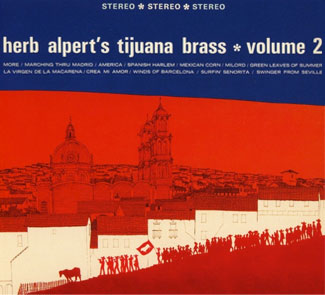
This classic brass, 2-part album by Herb Alpert and the Tijuana Brass features songs by the LA-native as well as hit pop covers, from Phil Spector’s “Spanish Harlem” to Berstein and Sondheim’s “America” from West Side Story. The former USC Trojan Marching band member was supposedly inspired by the mariachi bands he heard on a trip through Baja, California. He later went on to sell more than 72 million records worldwide, becoming the only musician to hit No. 1 on the Billboard Hot 100 Pop chart as both a vocalist and instrumentalist.
Wanye Newton records Danke Schoen in Studio Two
Ricky Nelson records "Fools Rush In" in Studio Two
Barry McGuire records "Eve of Destruction" in Studio Three
The Beach Boys record "Barbara Ann" in Studio Two
Studio One opens for business, first session is Petula Clark’s "My Love"
The Beach Boys record "California Girls" in Studio Three
Gerry Lewis & The Playboys record Everybody Loves a Clown in Studio Two
Johnny Mathis’ Love is Everything recorded in Studio Three
The Mamas & the Papas record "California Dreamin’" in Studio Three
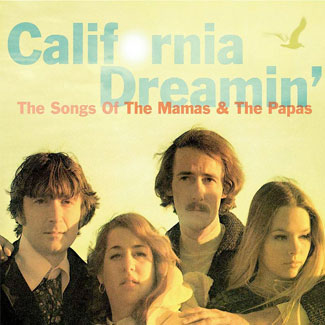
The epitome of California sunshine pop was recorded in Studio Three in November of 1965. Written by John and Michelle Phillips, and featuring session players from The Wrecking Crew, the groovy hit spoke to the dream of the West Coast espoused by the counterculture in the 1960s. Later covered by The Beach Boys and the band America, the song was certified Gold in June 1966 and added to the Grammy Hall of Fame in 2001.
The Mamas & The Papas record "Monday, Monday" in Studio Three
Righteous Brothers record "Soul & Inspiration" in Studio Two
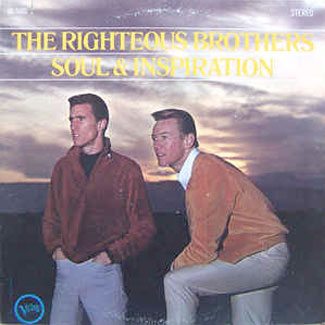
The Righteous Brothers were at the height of their career, looking for a hit to follow “You’ve Lost That Loving Feeling.” Recorded late in 1965, the lush brass arrangements did the trick, becoming their next number one Billboard hit.
Scott Mackenzie records his classic hit "San Francisco" in Studio Three
The Beach Boys record their masterpiece album Pet Sounds in Studio Three
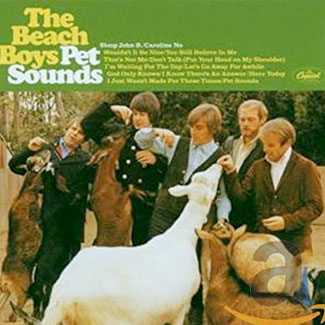
When Brian Wilson quit touring with The Beach Boys, he set out to create the greatest rock album ever made, experimenting for months on end with session players from The Wrecking Crew in Studio Three. The resulting Wall of Sound is now known as the best album of all time (or tied with The Beatles’ Sergeant Pepper, depending on your preferences). For a dramatized play-by-play of the concept album’s conception and release, we recommend the film “Love and Mercy,” which was shot at EastWest in 1966, featuring true to life recreations of the recording console and wardrobe from the time period.
Roger Williams records "Born Free" in Studio One
Frank Sinatra records Strangers in the Nightin Studio One
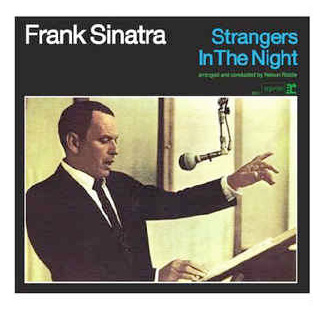
Recorded in the spring of 1966, Strangers in the Night flew straight to number one on the pop charts with a balance of superb pop instrumentation and big band magic. Featuring members of The Wrecking Crew and The Nelson Riddle Orchestra, the recordings took home Record of the Year and Best Male Vocal Performance awards at the Grammy Awards of 1967. Frank Sinatra’s podium is still kept in Studio One and used by conductors and band leaders to this day.
Frank Sinatra records "The Summer Wind" in Studio One
The Mamas & The Papas record Dancing in the Street in Studio Three
Frank Sinatra records "That’s Life" in Studio One
Johnny Rivers records "Baby I Need Your Lovin’" in Studio Three
The theme from the TV series Mission Impossible is recorded in Studio One
Frank and Nancy Sinatra record their duet "Somethin’ Stupid" in Studio One
Elvis Presley records his 1968 Comeback Specialin Studio One
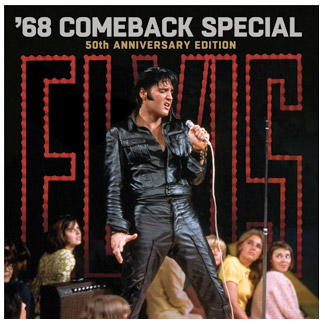
Originally airing on NBC on December 3, 1968, this TV special was one of the most-watched programs of 1968, and is largely attributed for re-launching Elvis Presley’s singing career. The pre-recorded audio from Studio One features members of The Wrecking Crew and NBC Orchestra, and engineering by Bones Howe. The performance was reviewed by the media as powerful and effortless, a feat of emotional grandeur and historical resonance.
Crosby Stills and Nash’s "Long Time Gone" in Studio Two
Theme from "Hawaii Five-O" recorded in Studio Two
5th Dimensions’ cover of "Stone Soul Picnic" recorded in Studio Three
The Cowsills record "Hair" in Studio Three
Mason Williams records Classical Gas in Studio Two
Peggy Lee records infamous hit "Is That All There Is?" in Studio One
Mama Cass records Make Your Own Kind of Music in Studio Three
In the 1970s, the hits kept on coming at Western Recorders. In Studio One, Barbara Streisand became a household name with “The Way We Were”, Frank Sinatra recorded “New York, New York”, the band Player recorded “Baby Come Back”, and Olivia Newton John sang “Hopelessly Devoted To You” for the soundtrack for Grease. Also in Studio One, the themes from The Godfather and M.A.S.H. were recorded.
In Studio Two, David Cassidy sang “I Think I Love You” from The Partridge Family, the themes were done from the TV show The Love Boat and the miniseries Roots, Dionne Warwick recorded her hit “Déjá Vu” and David Bowie mixed Iggy Pop’s groundbreaking album Raw Power.
Dolly Parton’s soundtrack for the film 9 to 5 was recorded in Studio Three, along with the band America’s song “Goodbye” from their album Hat Trick. Disco reigned supreme with The DeFranco Family’s Save The Last Dance For Me and Herbie Hancock’s Monster. Throughout the building, scenes for the motion pictures A Star Is Born and You Light Up My Life were filmed.
David Cassidy sings I Think I Love You in Studio Two
Theme for the film The Godfather recorded in Studio One
Theme for the TV series M.A.S.H. recorded in Studio One
Barbra Streisand records her hit "The Way We Were" in Studio One
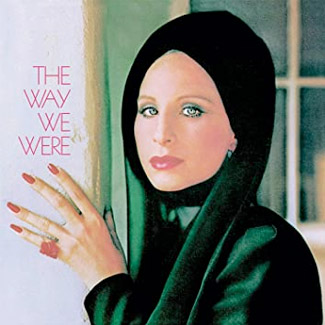
This Academy Award-winning song was the most commercially successful recording of 1974, topping the charts and inspiring an equally acclaimed cover recording by Gladys Knight & The Pips. Written from the perspective of Katie Morosky, the character Streisand played in the film by the same name, the track resonated the social malaise of the era. Featuring Hal Blaine and Carol Kaye of The Wrecking Crew on drums and bass, the track has since become one of Streisand’s signature, career-defining songs.
Marvin Gaye records Let’s Get It On in Studio One
David Bowie mixes Iggy Pop’s Raw Power in Studio Two
Barbra Streisand’s Classical Barbra recorded in Studio One
The DeFranco Family records Save The Last Dance For Me in Studio Three
Filming for motion picture You Light Up My Life in Studio Two
Detective records Takes One To Know One in Studio One
Johnny Rivers records Slow Dancing (Swayin' To The Music) in Studio Two
Barbra Streisand records her album Superman in Studio Two
Music recorded for the TV miniseries Roots in Studio Two
Theme from the TV series The Love Boat recorded in Studio Two
Player records "Baby Come Back" in Studio One
Olivia Newton John records "Hopelessly Devoted To You" in Studio One
Alice Cooper records his album From The Inside in Studio One
Frank Sinatra records "New York, New York" in Studio One
Dionne Warwick records her hit "Déjá Vu" in Studio Two
Herbie Hancock records Monster in Studio Three
In the early 1980s, recordings for Michael Jackson’s best-selling album Thriller were done in Studio One, along with the theme from the TV show Hill Street Blues. In Studio Three, Blondie cranked out some of their most famous hits, including “The Tide is High” and “Rapture”.
In 1985, Bill Putnam sold both United Studios and Western Recorders to engineer Allen Sides. Putnam’s health had been ailing for several years so he was anxious to sell his holdings. Allen Sides still had to convince Frank Sinatra though, who still owned a stake in the company. Once successful, Sides renamed both studios Ocean Way Recording.
The change in ownership didn’t stop the train of hits. Madonna’s Like A Prayer was recorded in Studio One, along with U2’s album Rattle and Hum. Studio Two welcomed Elvis Costello for his album Spike and The Red Hot Chili Pepper’s Mother’s Milk. The Red Hot Chili Peppers would go on to make many more albums in this room. Donna Summers recorded Cats Without Claws in Studio Three along with Stevie Knicks’ Rock A Little.
It was also during this time period that Studio Five was built out of the old UREI offices for alternative rock producer Scott Litt.
Natalie Cole records Don’t Look Back in Studio One
Blondie records their hit "The Tide is High" in Studio Three

Blondie skyrocketed to the top of the US and UK charts with their cover of The Paragons’ “The Tide Is High” in 1980. As the lead single from Autoamerican, it marked an eclectic departure for the band in their 5th studio album. Engineered by Lenise Bent and produced by Mike Chapman, the album’s success proved New Wave could make a splash by riding the waves of Reggae.
Blondie records "Rapture" in Studio Three
Theme for the TV series Hill Street Blues recorded in Studio One
Recordings for Michael Jackson’s epic album Thriller in Studio One
Gladys Knight and the Pips record Visions in Studio Two
Donna Summer records Cats Without Claws in Studio Three
Stevie Knicks records Rock A Little in Studio Three
Bill Putnam sells the studios to Allen Sides, studios renamed Ocean Way
U2 records their album Rattle and Hum in Studio One
Elvis Costello records Spike in Studio Two
Madonna records "Like A Prayer" in Studio One
Red Hot Chili Peppers record Mother’s Milk in Studio Two
In the early 1990s, Michael Jackson returned for his album Dangerous in Studio One. Also in Studio One, Guns N’ Roses recorded their album “The Spaghetti Incident?”, Meatloaf recorded Bat Out of Hell II: Back To Hell, and Tool recorded Ænima. Orchestrations were recorded for Natalie Cole’s Unforgettable, along with the soundtracks for What’s Love Got to Do With It and The Bodyguard, which included Whitney Houston’s infamous cover of “I Will Always Love You”. The Rolling Stones took over Studio One – and every studio in the building – for their album Bridges to Babylon.
Studio Two had become the epicenter for rock music by this time, welcoming Iggy Pop, Slayer, Tom Petty, Incubus, AC/DC, Elton John, Blink 182, Greenday, Weezer, and the return of The Red Hot Chili Peppers for their hit album Californication.
Studio Five saw mixes from R.E.M., Liz Phair, The Indigo Girls, and Nirvana’s MTV Unplugged in New York.
In 1999, owner Allen Sides sold the building to computer magnate Rick Adams, who changed the name to Cello Studios.
Iggy Pop records Brick By Brick in Studio Two
Natalie Cole records Unforgettable . . . with Love in Studio One
Michael Jackson records Dangerous in Studio One
Meatloaf records Bat Out of Hell II: Back into Hell in Studio One
Music for the film What’s Love Got To Do With It recorded in Studio One
Whitney Houston records "I Will Always Love You" in Studio One, mixed in Studio Two
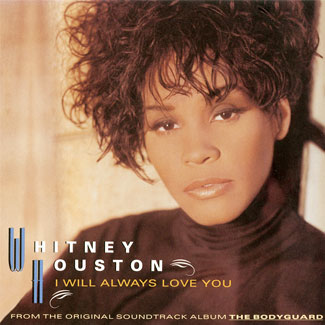
The best-selling song by a female artist in all of music history, and one of the best-selling songs of all time, “I Will Always Love You” is actually a cover song, originally written and performed by Dolly Parton. With a music video featuring scenes from The Bodyguard, Houston’s version became her ‘signature song’ and was an instant number one Billboard hit, nabbing the Record of the Year and Best Female Pop Vocal Performance Grammy Awards in 1994.
Guns N’ Roses record their album The Spaghetti Incident? in Studio One
Nirvana’s MTV Unplugged in New York mixed in Studio Five
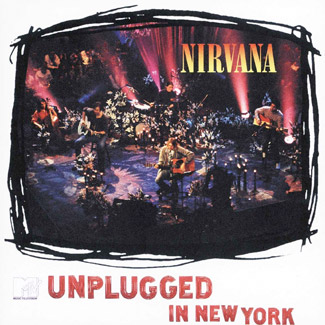
The first mix project to christen Studio Five also marked Nirvana’s first release following the death of Kurt Cobain on April 5, 1994. Debuting at number one, the Los Angeles Times reviewed it as an intimate folk rock performance which “deserves a place on the rock TV history shelf alongside the informal, sit-down section of Elvis Presley’s epic comeback special in 1968”. It also won a Grammy for Best Alternative Music Album at the 38th Annual Grammy Awards.
R.E.M. records Monster in Studio Two & Studio Five
Slayer records Divine Intervention in Studio Two
Tool records Ænima in Studio One
The Red Hot Chili Peppers’ One Hot Minute recorded in Studio Five
AC/DC records Ballbreaker in Studio Two
Céline Dion records Falling Into You in Studio One
Indigo Girls’ 1200 Curfews mixed in Studio Five
R.E.M. records New Adventured in Hi-Fi in Studio Two & Studio Five
The Rolling Stones record Bridges to Babylon in Studio One, Two, & Three
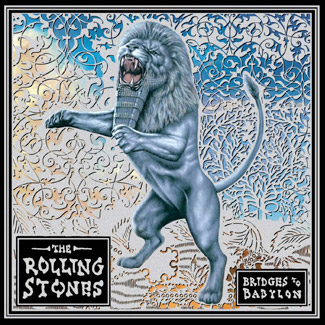
The 21st British and the 23rd American studio album by the Rolling Stones, Bridges to Babylon features a large range of genres, including blues rock, hip hip and rap. Vocalist Mich Jagger and guitarist Keith Richards brought in multiple superstar producers to craft the album’s sprawling sound, including the Dust Brothers, Don Was, and Rob Fraboni.
The Crystal Method’s Vegas mixed in Studio Five
Red Hot Chili Peppers record Californication in Studio Two
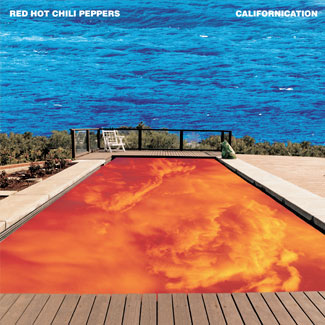
RHCP’s most commercially successful studio release was recorded in the winter of 1998. Producer/engineer Rick Rubin and engineer Greg Fidelman captured the band’s most intimate album, which highlighted the evocative nature of California. The hit single “Scar TIssue” spent 16 weeks on Billboard’s Modern Rock charts before winning the Best Rock Song award at the 42nd Annual Grammy Awards in 1999.
Slayer record Diabolus in Musica in Studio Two
Liz Phair records Whitechocolatespaceegg in Studio Two & Studio Five
Days of the New II mixed in Studio Five
Incubus records Make Yourself in Studio Two & 5
Allen Sides sells the studios to Rick Adams, studios renamed Cello Studios
During the Cello years, the studios took on a more hard rock sound. Rage Against the Machine, System of a Down, Audioslave, Jimmy Eat World, Ryan Adams, Natalie Merchant, and Sum 41 made some of their best work during these years in Studio Two, along with the return of Weezer, Tom Petty, Blink 182, and The Red Hot Chili Peppers. The room became a favorite of legendary producer Rick Rubin.
The early work of The Mars Volta and Muse came through Studio Three and were mixed in Studio Five. Also in Studio Five, mixes were done for My Chemical Romance, Franz Ferdinand, and New Order, along with the soundtracks for the films Spider-Man, The Scorpion King, and Daredevil. The ambience of Studio One lent a large sound to albums by AFI, Tool, and Macy Gray, as well as HBO’s Six Feet Under.
In 2005, Cello Studios shut down and the studios were in danger of closing for good. Just before it was slated for demolition, EastWest Sounds owner Doug Rogers purchased the facility, who changed the studios to our contemporary name – EastWest Studios. First though, Rogers brought in famed designer Phillippe Starck to completely remodel the lobby, kitchen, and artist lounges in order to bring the facility into the 21st century, while preserving the historic look and sound of the recording rooms.
In 2009, EastWest Studios opened its door for business. The soundtracks for the films Burlesque and Get Him To The Greek were recorded in Studio One and 2, respectively, and pop phenomenon Rihanna recorded work for her album Rated R in Studio Three.
Rage Against the Machine record Renegades in Studio Two
Weezer records Weezer (The Green Album) in Studio Two
Macy Gray records The ID in Studio One
Music for the TV series Six Feet Under recorded in Studio One
Blink 182 records Take Off Your Pants and Jacket in Studio Two
Natalie Merchant records Motherland in Studio Two
System of a Down record Toxicity in Studio Three
Tool records Lateralus in Studio One
Red Hot Chili Peppers record By The Way in Studio Two
Weezer records Maladroit in Studio Two
Soundtrack for the motion picture Spider-Man mixed in Studio Five
AFI records Sing the Sorrow in Studio One
Soundtrack for the motion picture The Scorpion King mixed in Studio Five
Badly Drawn Boy records Have You Fed the Fish in Studio Two
The Apex Theory’s Topsy Turvey mixed in Studio Five
Tom Petty and the Heartbreakers record The Last DJ in Studio Two
Muse records Absolution in Studio Three, mixed in Studio Five
Audioslave records Audioslave in Studio Two, mixed in Studio Five
Jimmy Eat World records Futures in Studio Two, mixed in Studio Five
The Mars Volta record De-Loused in the Comatorium in Studio Three
Soundtrack for the motion picture Daredevil mixed in Studio Five
Ryan Adams records Love Is Hell in Studio Two
Franz Ferdinand’s You Could Have It So Much Better mixed in Studio Five
New Order’s Waiting for the Siren’s Call mixed in Studio Five
Cello Studios closes down
The studios sold to Doug Rogers, become EastWest Studios
Renovations by designer Phillipe Starck begin
EastWest Studios opens for business
Music for the motion picture Burlesque recorded in Studio One
Music for the motion picture Get Him To the Greek recorded in Studio Two
Jerry Lee Lewis’ Mean Old Man recorded in Studio Two
Rihanna records Rated R in Studio Three
Since opening, EastWest Studios has carried on this proud tradition of recording the best of the industry. From 2012 to 2022 alone, the studios garnered a record-breaking 172 Grammy nominations for work recorded or mixed in our rooms.
In Studio One, music was recorded for the films Eat, Pray, Love, Iron Man II, Jurassic World, Selma, and A Star Is Born, as well as the soundtracks for iconic TV shows such as Mad Men, Glee, American Idol, The Voice, The Umbrella Academy, and Star Trek: Picard. Studio One was a location in the Oscar-winning film La La Land and also where the Grammy-nominated albums were recorded, including The Foo Fighters' Concrete and Gold, Justin Bieber’s Purpose, Coldplay's Everyday Life, Foster The People's Torches, Justin Timberlake’s The 20/20 Experience and Harry Styles' Fine Line.
Studio Two continued to be the temple of rock with the return of The Red Hot Chili Peppers, Muse, Weezer, Sum 41, Garbage, Slipknot, Slayer, and Metallica.
In Studio Three, pop reigned supreme with Rihanna, Lady Gaga, Ariana Grande, Demi Lovato, Janelle Monáe, and Kelly Rowland recording some of their biggest chart-topping hits. Studio Three was also the site of scoring sessions for Gone Girl and the Fifty Shades of Grey and American Horror Story franchises.
Studio Five went through extensive renovations and reopened in 2014, hosting projects by Wu Tang Clan, Justin Bieber, Frank Ocean, Martin Garrix, Perfume Genius and The War On Drugs.
Luis Miguel records Luis Miguel in Studio One
Music for the motion picture Iron Man II recorded in Studio One
Rod Stewart records Fly Me To The Moon in Studio One
Music for the motion picture Eat, Pray, Love recorded in Studio One
Music for the TV series Mad Men recorded in Studio One
The Red Hot Chili Peppers record By The Way in Studio Two
Rihanna records Loud in Studio Three
Foster the People record Torches in Studio One
Music for the TV series Glee recorded in Studio One
Frank Ocean records Channel Orange in Studio Two and Studio Three
Music for the TV series American Idol recorded in Studio One
Dwight Yoakum records Three Pears in Studio One
Garbage records Not Your Kind of People in Studio Two
Music for the motion picture Tower Heist recorded in Studio One
Sum 41 record Screaming Bloody Murder in Studio Two
Nas records Life is Good in Studio One and Studio Three
The Cult record Weapon of Choice in Studio One
Jason Mraz records Love Is A Four Letter Wor in Studio One
Melody Gardot records her Grammy winning album The Absence in Studio Two
Jimmy Cliff’s Rebirth mixed in Studio Three
Filming for the TV series The Voice in Studio One
Music for the TV series 90210 recorded in Studio One
Richie Sambora records Aftermath of a Lowdown in Studio Three
Muse’s album The 2nd Law recorded in Studio One & Studio Two
Kelly Rowland records Talk A Good Game in Studio Three
Tegan & Sara record Heartthrob in Studio One
Justin Bieber records Believe in Studio One
Justin Timberlake records The 20/20 Experience in Studio One
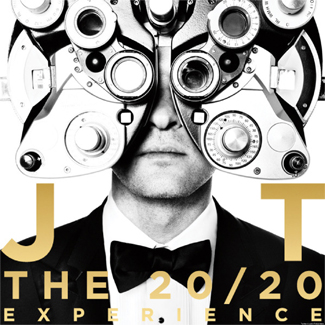
JT soared to the top of the charts with his third solo endeavor, a 2-part album experience produced by Timbaland, J-Roc, and Rob Knox with a feature by Jay-Z. Seamlessly blending R&B, soul, pop, and newlywed bliss (Timberlake married actress Jessica Biel in October 2012) the critically acclaimed work exhibited lush arrangements from The Benjamin Wright Orchestra and engineer Reggie Dozier. Part one became Billboard’s Year-End number one album, with the single “Pusher Love Girl” winning the Grammy for Best R&B Song at the 56th Annual Grammy Awards.
Music for the motion picture Behind the Candelabra recorded in Studio Three
Demi Lovato records Demi in Studio One
Ariana Grande records Yours Truly in Studio One and Studio Three
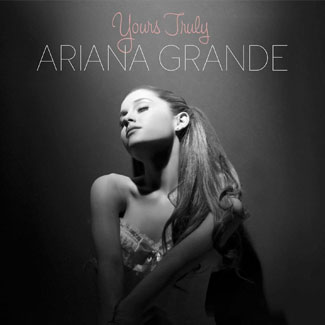
The actress-turned-pop star recorded her debut studio album over the course of several years, shuttling between the recording studio, writing sessions, and filming the Nickelodeon show, Victorious. Inspired by vocalists including Whitney Houston and Mariah Carey, the final product was a love letter to ‘90s pop and R&B music. Debuting at the top of the charts, with strong digital sales, it became Grande’s first number one album and was later certified platinum by the RIAA.
Music for the TV series American Horror Story recorded in Studio Three
Michael Bublé To Be Loved recorded in Studio One
Music for the TV series Bates Motel recorded in Studio One
Music for the TV series Revenge recorded in Studio One
Fitz and the Tantrums record More Than Just a Dream in Studio Two
AFI records Burials in Studio Two
Janelle Monáe records The Electric Lady in Studio Three
Music for the TV series Devious Maids recorded in Studio Two
Music for the motion picture Oblivion recorded in Studio Three
Lea Michele records Louder in Studio One and Studio Two
Studio Five reopens after extensive renovations
Sarah McLachlan records Shine On in Studio One
Music for the Film The Book of Life recorded in Studio Two
Trent Reznor/Atticus Ross record the soundtrack for Gone Girl in Studio One
Kelly Clarkson records Piece by Piece in Studio One and Studio Three
Ziggy Marley records Fly Rasta in Studio One
Soundtrack for the film Selma recorded in Studio One
Soundtrack for the film Fifty Shades of Grey recorded in Studio One
Justin Bieber records Purpose in Studio Five
Andra Day records "Rise Up" in Studio Two
Filming for La La Land shot in Studio One and Studio Two

Filmed in August and September of 2015, writer/director Damien Chazelle chose Studio One, Studio Two, Lounge One, and the parking lot of EastWest as a backdrop for several scenes in this award-winning musical romantic comedy. You can catch Bill Putnam’s signature acoustic design as Sebastian (Ryan Gosling) drops in on his first rehearsal with Keith (John Legend)’s jazz fusion band, or check out Philippe Starck’s eclectic design as contracts are signed. Beloved for it’s dream sequences, musical numbers, and classic LA locations, the film was nominated for fourteen Academy Awards, taking home six including Best Director for Chazelle and Best Actress for Emma Stone.
Macklemore & Ryan Lewis record Downtown in Studio One and Studio Five
Soundtrack for Amazon's Mozart in the Jungle recorded in Studio One
Demi Lovato records Confident in Studio Five
Keith Urban records Ripcord in Studio One and Studio Two
Weezer records White Album in Studio Two
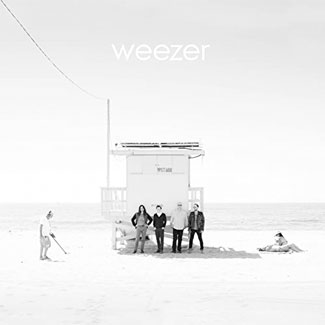
For their tenth studio album, Weezer headed into the studio with Producer/Engineer Jake Sinclair, aiming to create a “beach album,” with Wall of Sound production and a ‘90s grunge take on ‘60s pop songs. Critically acclaimed for hits including “Do You Wanna Get High?”, the album received a Grammy nomination for Best Rock Album at the 59th Annual Grammy Awards in 2017.
Animal Collective record Painting With in Studio Three
Frank Ocean records BLOND in Studio Two and Studio Five
Music for the TV Show American Idol recorded in Studio One
Willie Nelson records Summertime in Studio Two
Music for the Film Hidden Figures recorded in Studio One
Ariana Grande records Dangerous Woman in Studio Two
Music for the Film Trolls recorded in Studio Five
John Mayer records Search for Everything in Studio One
Niall Horan records "Slow Hands" in Studio Two
Vince Staples records Big Fish Theory in Studio Five
Foo Fighters record Concrete and Gold in Studio One
Goo Goo Dolls record You Should Be Happy in Studio Two
Justin Bieber & Bloodpop record Friends in Studio Two
The War on Drugs record A Deeper Understanding in Studio Two
Vic Mensa records The Autobiography in Studio Two
Logic feat. Alessia Cara, Khalid record "1-800-273-8255" in Studio One
Martin Garrix & Troye Sivan record There for You in Studio Five
Justin Timberlake records Man of the Woods in Studio One
Deadmau5 record Where's the Drop? in Studio One
Lady Gaga records "Your Song" in Studio Two
Bebe Rexha records Expectations in Studio Three
Travis Scott records Astroworld in Studio One
Dave Grohl records PLAY in Studio One
Ann Wilson records Immortal in Studio Three
Paul McCartney records Egypt Station in Studio One
Music for the Film A Star Is Born recorded in Studio One & Studio Two
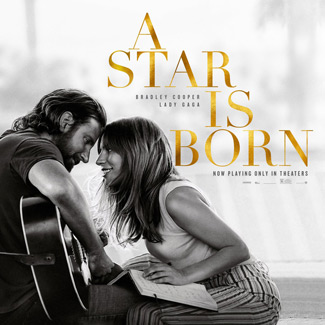
This was the third remake of the classic story of fame and heartbreak, and the second version done at 6000 Sunset. With Bradly Cooper making his directorial debut as well as starring alongside pop phenom Lady Gaga, the movie received eight nominations from the Academy Awards, taking home a trophy for Best Original Song “Shallow.”
Jason Mraz records Know. in Studio Three
Punch Brothers record All Ashore in Studio Five
Elvis Costello Look Now in Studio Three
Meghan Trainor records Treat Myself in Studio One
Ben Platt records Sing To Me Instead in Studio One
Slipknot We Are Not Your Kind
Music for the TV series The Umbrella Academy recorded in Studio One
Music for the TV series Star Trek: Picard recorded in Studio One
Coldplay records Everyday Life in Studio One
Music for the TV show Castle Rock
Music for the Film Dora and the Lost City of Gold recorded in Studio One
Music for the TV show Homecoming recorded in Studio One
Music for the TV show Fargo recorded in Studio Three
James Blake records Assume Form in Studio Five
JS Ondara Tales of America recorded in Studio Three
Selena Gomez & Kid Cudi record "A Sweeter Place" in Studio Five
Tyler, the Creator Igor recorded in Studio Three
Iggy Azalea records In My Defense in Studio Five
Harry Styles records Fine Line in Studio One
In Studio One, scores for the films Onward, One Night in Miami, and Prey were recorded, along with the soundtrack for HBO's hit show Watchmen. Jon Baptiste recorded We Are, which won Album of the Year at the 64th Annual Grammy Awards, along with Michael Bublé's Higher (Best Traditional Pop Vocal Album Grammy winner) and Ozzy Osbourne's Patient Number Nine (Best Rock Album Grammy winner).
Studio Two welcomed Lizzo for her Grammy nominated album Special, Kendrick Lamar for Mr. Morale & The Big Steppers (Best Rap Album Grammy winner), along with the soundtrack for Disney's Encanto (multiple Grammy award winner).
Studio Three continued to be a pop music factory with the recording of Lady Gaga's Chromatica (Best Pop Vocal Album Grammy nominee), Doja Cat's Planet Her (Best Pop Vocal Album Grammy nominee), along with the Grammy nominated soundtrack for Baz Luhrmann's biopic masterpiece Elvis.
In Studio Five, The Red Hot Chili Peppers mixed Unlimited Love (Best Rock Album Grammy nominee), Post Malone and Doja Cat recorded their duet I Like You (Best Duet Grammy nominee), and David Guetta and Bebe Rexha recorded their mega EDM smash I'm Good (Blue), which was nominated for a Grammy for Best Dance/Electronic Music Recording.
For over 60 years, we have been making music history, turning out more Grammy nominated recordings than any other studio in the world. Our goal remains to provide artists with the utmost in service, the best in new and vintage technologies, and an unparalleled creative environment.
Music for the Film Onward recorded in Studio One
Moby records All Visible Objects in Studio Three
Margot Price records That's How Rumors in Studio Three
Music for the TV series Watchmen recorded in Studio One
Lady Gaga records Chromatica in Studio Three & Studio Five
Disclosure records Energy in Studio One
Jon Batiste records album of the year We Are in Studio One and Studio Two
Doja Cat records Planet Her in Studio Three and Studio Five
Marshmello records Shockwave in Studio One
Snoh Aalegra records Temporary Highs in the Violet Skies in Studio Five
Music for the film One Night in Miami recorded in Studio One & Studio Three
Music for the film The United States Vs. Billie Holiday recorded in Studio Three
Lizzo records Special in Studio Two and Studio Five
Kendrick Lamar records Mr Morale & The Big Steppers in Studio Two and Studio Three
Music for the film Encanto recorded in Studio Two
Michael Bublé records Higher in Studio One
Camila Cabello and Ed Sheeran record Bam Bam in Studio One
Pentatonix records Evergreen in Studio Two and Studio Three
David Guetta and Bebe Rexha record I'm Good (Blue) in Studio Five
Red Hot Chili Peppers record and mix Unlimited Love in Studio Five
War on Drugs record Harmonia's Dream in Studio Two
Music for the film Elvis recorded in Studio Three
Post Malone and Doja Cat record I Like You in Studio Five
Marcus Mumford records Self-Titled in Studio Two
Ozzy Osbourne records Patient Number Nine in Studio One
Edgar Winter record Brother Johnny in Studio Two
Music for the game Call of Duty: Vanguard recorded in Studio Two
Jack Johnson records Meet the Moonlight in Studio Two